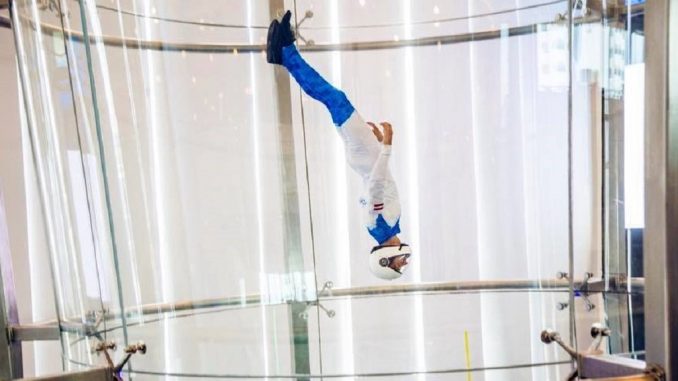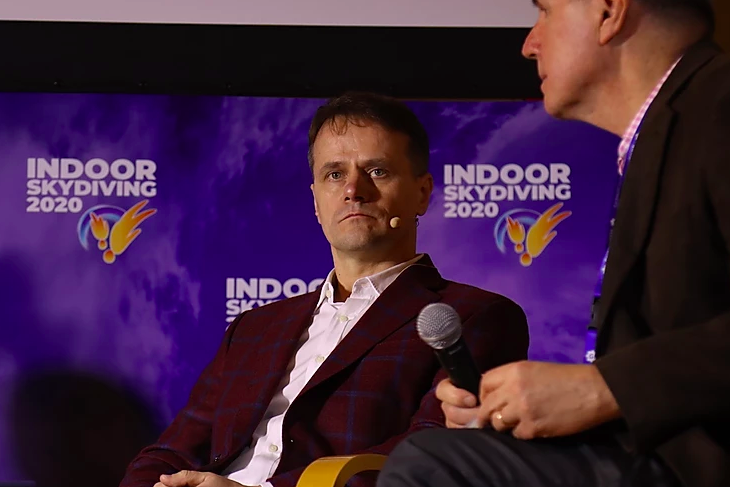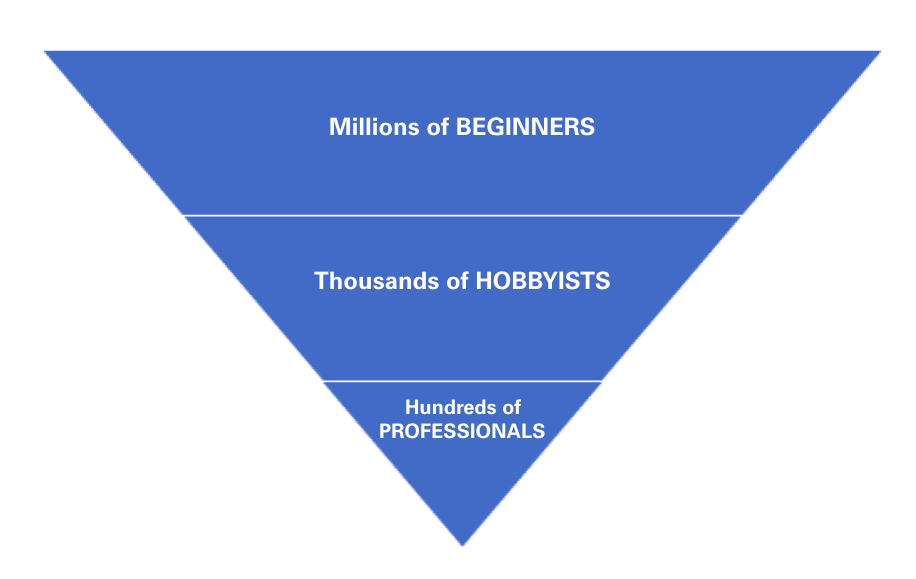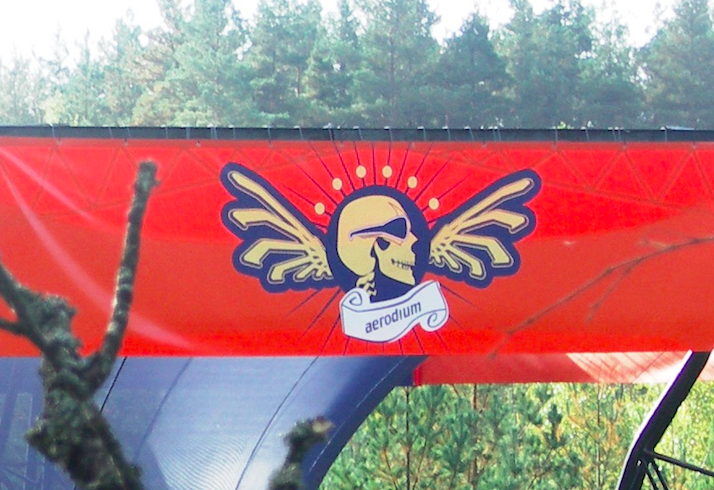
AS WE SEE IT!
Our thoughts and conclusion after Global Indoor Skydiving Summit 2020
Written by Ivars Beitans (Owner & Visionary of AERODIUM) and Toms Ivans (World’s champion of freestyle indoor skydiving 2018, wind tunnel flyer of AERODIUM)

On February 1st – 4th, 2020 all parties involved in indoor skydiving – athletes, sports federations, legislators, operators and manufacturers – came together at the first truly global summit – FAI Indoor Skydiving Summit 2020. Nobody knew what to expect but everybody was happy to finally meet each other.
OVERVIEW : WHAT WAS COVERED
The main goal of the summit was to discuss how to bring indoor skydiving to the Olympics. Everybody agreed that an active sports discipline can’t exist without athletes training in widely available wind tunnels and competing regularly in local and international competitions. It was noted that governing entities have an important role – also in “packaging” and promoting the sport (besides defining the rules and competitions). To make the sport more mainstream sports heroes and stars should be created to attract even more public and sponsorship attention.
Eventually the panels (and discussions outside the panels) drifted to overcoming the issues that limit the growth in popularity of the sport. One painful issue that was addressed regularly was costs. Different approaches to saving were mentioned – starting from consumption of tunnels to smoother instructor workflow organization. Still electricity is only the third or fourth biggest cost item for operators.
As Simon Ward from iFly mentioned – cost of money tops the list, closely followed by other positions of expenses:
- Cost of the money
- Lease of the land
- Labor
- Energy
- Marketing
Much was talked about safety and (more or less) everybody agreed that a standardization of minimum safety features is needed to make the sport safe for everyone. Everybody in the industry must work towards being as safe as possible – it influences not only them but the whole industry. Still, the industry has to remain open for new innovations to improve safety in future.
Some ideas were raised on how to boost the popularity of indoor skydiving. First idea that won almost unanimous support was to increase visibility of bodyflying – to make it visually appealing with events, to create sports heroes that the public can aspire to and to feature bodyflying in popular culture (movies, TV shows, etc.). Some industry players suggested that a bigger number of smaller tunnels would make it more accessible for first-timers and visible for the public.
Here we have compiled the main takeaways from the summit – what different players should think about to make the future brighter for everybody involved in our sport.
MAIN TAKEAWAYS FOR EVERYONE IN THE INDUSTRY
So far indoor skydiving sport was driven by skydiving enthusiasts. The industry has seen rapid growth in the last decade. Today, however, growth is slowing down due to saturation in the market. The operators who were the first in their markets 10 years ago really enjoyed a demand that generated good return on their investment. This is not so easy anymore and the industry is slowing down!
This shows that the number of tunnels isn’t the limiting factor for the popularity of the sport. A different approach is needed to really bring bodyflying to masses.
Let’s take a look at a simple example – football (aka soccer in USA). It’s the world’s most played sport because it is free or very cheap to start – you only need a ball and a grass field to start. This is where popularity starts. The next level of players you can find in schools and small town competitions. They already buy special gear and rent their local stadium. Then only a few best reach the level of professional football players where they can be well paid and sponsored.
Thousands, millions of enthusiasts pay for themselves and do it for the fun of it. Point is – to grow the number of pros we need more hobby flyers and beginners who can afford (both money and time) to do it because they like it. And one thing can not exist without the other: to have football stars we have to have masses interested in this game, to have a mass sport we have to have stars to encourage young kids.

Of course everyone in the sport will benefit from bigger visibility. We all should strive to create more possibilities to see more impressive flying competitions, more famous and popular stars. By the way, we have a built-in advantage here – bodyflying not only looks impressive, but also can be observed in real life. For example, scuba diving might never become an Olympic sport because it’s not so easy to be a spectator.
But most importantly, for skydiving to thrive (both as a sport and a business), it needs to be more accessible for kids and beginners. Because then the overall number of people who have tried it will grow, thus there will be more people who are training and eventually more pro flyers competing.
By the way, Toms Īvāns started training on a “mini” tunnel – only 1.6 m (5.2 feet) in diameter. And six years later – he became World Champion in 2018 and won the solo Freestyle discipline at Freestyle Open Wind Games 2020 again. You can see his “From Chef To Champion” story here:
MAIN TAKEAWAYS FOR MANUFACTURERS
All manufacturers have to work together to minimise potential hazards and solve them proactively:
- with passive safety measures – fool-proof technology that eliminates the possibility of any human error on the operator side and minimizes consequences of human error on the flyer’s side;
- with active safety measures – education, training, and supervision done by instructors.
At the same time, manufacturers have to innovate in technologies to reduce overall costs – both fixed costs of building a tunnel and running costs of operating it. Lower costs for operators will make flying affordable to more customers. And that will benefit all, as mentioned above.
We think too little attention is paid to the pains of operators – firstly, their costs, secondly, their investment risk. Naturally operators want to use a product that has proven itself and they want the option of easy exit if the business fails. Every business needs an exit strategy.
For example smaller tunnels are cheaper and therefore pay off sooner. Quick setup of portable units allows clients to test business. Reduced footprint, modularity, and easy installation makes tunnels a better match for retailtainment in shopping malls and resorts. These are all ideas to make life easier for operators and flying time more affordable for end users.
MAIN TAKEAWAYS FOR OPERATORS
Location, location, location! That’s the main lesson I’ve learnt myself when operating an adventure business in Latvia and it is reinforced with every client’s tunnel we open. It is crucial to define who your core customer is (e.g. skydiving enthusiasts, private parties, or tourists) and estimate if you have enough customers in the area to make the business viable. Make sure you approach a wide audience – young, old, guys, girls… As I started Aerodium I made a mistake to target too narrowly. The communication featured a skull and stressed the adrenaline of flying – naturally all the clients I got were extreme-thrill-seeking guys, which is just a fraction of clients we are seeing now.

An early poster from Aerodium Sigulda
MAIN TAKEAWAYS FOR SPORT
Sport starts from childhood – that’s true in any sports discipline and bodyflying can use this principle as well. For example, Aerodium Sigulda is cooperating with the local municipality to organize “Young Flyers School”. And we see that this subsidized flying time creates recurring customers. Imagine what is possible when indoor skydiving becomes an official Olympic sport and governments start subsidizing it!
For experienced and ambitious flyers we recommend flying in different tunnels – it will enrich your experience and hone your skill because every tunnel is different.
Skydiving competitions are great events for meeting fellow enthusiasts, challenging and inspiring each other. However, competitions could be made more viewable for wider audiences. People would be able to understand what is going on if there were less disciplines and more defined rules. Furthermore, shorter duration of the competition would retain the attention of the audience better.
CONCLUSION
After the summit we feel there is a long way to go to wide popularity (and Olympics), but we’re inspired – indoor skydiving is uniting many enthusiastic, passionate, and smart people. We are sure our favorite sport will grow and prosper in the future!
P.S. You can see Toms Īvāns winning freestyle flight here:
